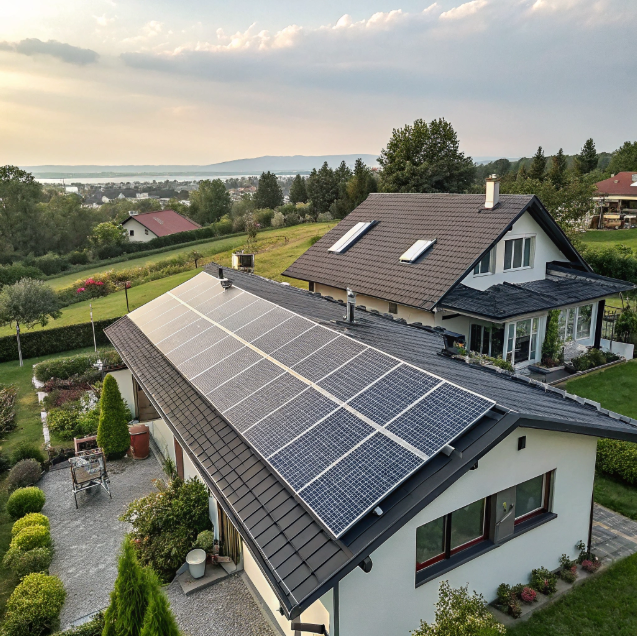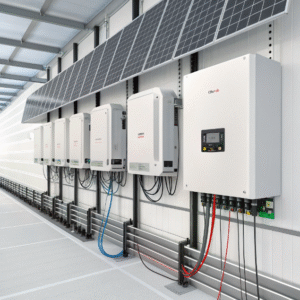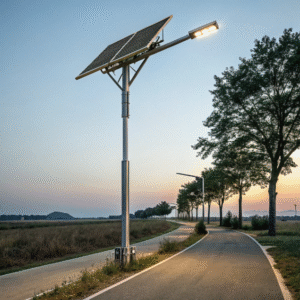How Much Solar Do You REALLY Need? A Simple Formula to Calculate the Perfect System Size for Your Home.
Staring at confusing solar quotes and unsure what size system you actually need? You're not alone. Most homeowners struggle with this critical first step.
Calculate your ideal solar system size1 by analyzing your annual kWh usage from utility bills. Divide this number by your area's production ratio to determine the DC system size in kilowatts needed to offset your energy consumption.

Getting the system size right is crucial—too small and you won't save enough, too large and you waste money. Let's break down the simple formula that takes the guesswork out of solar sizing.
Why Homes with Solar Sell Faster and for More Money: What Real Estate Agents Are Telling Their Buyers.
Worried that solar panels might hurt your home's resale value? The data tells a very different and profitable story.
Homes with owned solar systems sell faster and for ~4.1% more on average. Buyers view solar as a premium, future-proof upgrade that guarantees lower utility bills, making your property highly attractive in a competitive market.
Understanding the Solar Premium
The key distinction for resale value is system ownership. A leased system can complicate a sale, but a fullyowned system is a clear asset. Think of it as pre-paying for years of electricity for the next homeowner—a powerful selling point.
Solar System Ownership & Resale Impact
| System Type | Impact on Home Value | Buyer Perception |
|---|---|---|
| Owned System | Increases value (4.1% premium) | Major benefit, lower operating costs |
| Leased/PPA | Can complicate sale | Requires assumption of contract |
Real estate agents now actively market solar as a key feature. They highlight the eliminated electric bill, which provides a predictable monthly savings that buyers can bank on. This is especially valuable in markets with high electricity rates.
Furthermore, solar is increasingly seen as a modern home essential, much like an updated kitchen. It signals an energy-efficient, well-maintained property that is prepared for the future. Proper documentation of system performance and warranty transfers is essential to maximizing this value during the sale process.
Homes with owned solar systems sell for a premium.True Studies consistently show a positive impact on sale price compared to similar non-solar homes.
Leased solar systems always increase home value.False Leases can create complications and may not add the same value as an owned system.
What is a 'Smart Home'? It Starts with a Smart Energy System That You Control from Your Phone.
Believe a smart home is just voice-activated lights? True intelligence begins with how your home creates and manages its own power.
A true smart home integrates a smart energy system2—solar paired with monitoring software—that you control via a phone app. This allows you to track production, optimize consumption, and maximize savings autonomously.
Beyond Basic Automation: Energy Intelligence
Modern solar systems come with sophisticated energy monitoring3. This turns your phone into a dashboard for your home's power plant. You can see real-time energy production, your home's consumption, and even your energy exports to the grid.
Components of a Smart Energy System
| Component | Function | Smart Benefit |
|---|---|---|
| Solar Panels | Generate Electricity | Foundation for self-sufficiency |
| Inverter with Monitoring | Converts DC to AC power | Provides real-time data on production |
| Smart Meter | Measures energy flow | Tracks consumption vs. production |
| App/Portal | User Interface | Allows remote control and viewing of data |
This level of control enables you to make smarter decisions. For example, you can schedule energy-intensive tasks like running the dishwasher or charging an EV during peak solar production hours to use your own free power instead of buying it from the grid. Some advanced systems can even learn your habits and suggest optimizations automatically. This transforms your home from a passive energy consumer into an active, efficient energy manager.
A smart energy system provides real-time data on energy use.True Monitoring apps show exactly how much power you're producing and consuming.
Smart homes are only about lighting and thermostat control.False True smart homes integrate energy production and management for comprehensive efficiency.
Not All Solar Panels Are Created Equal. What to Look for on the Datasheet to Avoid a 25-Year Mistake.
Choosing solar panels based on price alone is a risky gamble. The datasheet holds the key to long-term performance and reliability.
Critical datasheet specs to compare are panel efficiency (%), temperature coefficient (%/°C), and performance warranty degradation rate. High-quality panels lose less than 0.5% of output per year, ensuring strong production for decades.
Decoding the Technical Specifications
The datasheet is your blueprint for the panel's lifetime performance. Don't be intimidated by the technical jargon; focus on a few key metrics that directly impact your savings.
Key Solar Panel Datasheet Metrics
| Metric | What It Means | Why It Matters |
|---|---|---|
| Efficiency (%) | How much sunlight is converted to electricity | Higher efficiency means more power from less roof space. |
| Temperature Coefficient | How much power output drops as heat increases | A lower (closer to zero) number means better performance on hot days. |
| Performance Warranty | Guaranteed power output over time (e.g., 92% after 25 years) | This is the manufacturer's promise of long-term reliability. |
A panel with a high efficiency rating is crucial if you have limited roof space. The temperature coefficient is often overlooked but vital—panels get hot in the sun, and a poor coefficient can significantly reduce summer output. Most importantly, scrutinize the performance warranty4. A tier-1 manufacturer will guarantee that their panels will still produce 90-92% of their original output after 25 years. Cheaper panels may degrade faster, silently eroding your ROI year after year. Investing in quality upfront prevents this 25-year regret.
The temperature coefficient indicates performance loss in heat.True A lower coefficient means the panel performs better in high temperatures.
All solar panels come with the same 25-year performance warranty.False Warranty terms, especially the guaranteed output percentage, vary significantly by manufacturer and quality.
Conclusion
Calculate your needs accurately, choose quality equipment for long-term value, and leverage smart technology to maximize your solar investment and energy independence.
Finding the right solar system size ensures you maximize savings and efficiency in energy consumption. ↩
Explore how smart energy systems can optimize your home's energy management and savings. ↩
Energy monitoring provides insights that can help you optimize your energy usage and savings. ↩
Understanding warranties ensures you choose reliable panels that maintain performance over time. ↩



